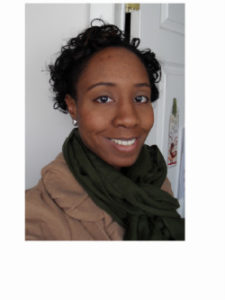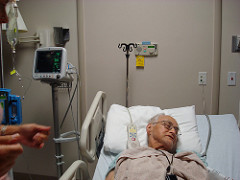St. Jude: A Place of Joy

Christina Carpenter
This guest post is by Christina Carpenter, RN, a nurse and writer. She’s pursuing her master’s degree at the Hunter-Bellevue School of Nursing in New York City, where she was a student last year in CHMP senior fellow Joy Jacobson’s narrative writing class for graduate nursing students. She writes poetry, fiction, and books for children. View her writings at her blog, The Key To Faith.
Magnet status is a coveted designation for many hospitals today. It means that they give excellent nursing care and demonstrate excellence in many areas, including lower patient mortality rates. At a recent visit I learned that St. Jude Children’s Research Hospital in Memphis, Tennessee, earned its magnet status in August of 2015.
Along with a few fellow nurses from the National Black Nurses Association and other esteemed guests, I had the privilege of experiencing this magnificent place last July. I got to witness first-hand the beauty of the building, feel the pride of the staff who work there, and catch the highlights of the good things this facility is doing. We were given an exclusive tour to the most widely known children’s cancer hospital in the country.
St. Jude, started by Danny Thomas in 1962, is a name that’s recognized all over the country. And this hospital is leading the way to change the prognosis of in children with a life-altering diagnosis of cancer.
I was impressed by the pristine beauty—the clean, modern radiance of the facility with its expansive manicured lawn at the front of the campus. The careening sidewalks are lined with flowers. Upon our arrival inside, we were greeted with a complementary lunch of pulled pork and chicken BBQ sandwiches, lemonade, and banana pudding. We were seated in a moderately sized auditorium with its red plush seats and movable writing desks.
We listened as one nurse gave an impassioned speech on the excellent working conditions at St. Jude. She called the facility “the closest thing to being the ivory tower for nurses because they go by the book.” The nurse to patient ratio there, she said, is averaging 1:3. “You actually have time for yourself, to eat your lunch, unlike other hospitals.”
She spoke of the people who come to the facility for treatment, only to be disappointed that they have to have a referral from their physician. But St. Jude strives to give hope to each family and make them feel welcomed there. The facility understands how precious time is to families when a child is sick and does not bill for treatment; 75% of revenue into the hospital comes from public funding.
Another nurse spoke of the goals of research at the institution—simply to find cures and make a better life for cancer patients. They want to help others, more than to get credit.
The world at St. Jude is highly secured to maintain patient confidentiality, so cameras are prohibited in certain areas. Though I didn’t take pictures, I can say that the feeling you get as you walk along is a cheerful one. Around every turn there is hope. Maybe it’s the high ceilings, the Starbucks cafes, and the artwork that give hope and encouragement.
My favorite parts were the artwork and photographs lining the corridors and the thought-provoking quotes on the walls. Especially moving were the artwork by patients and the photos of adult survivors holding black-and-white pictures of themselves as childhood cancer patients at St. Jude. Every survivor looked so healthy and happy compared to his or her sicker days. Young patients have access to an Xbox center, with a Nintendo game center. A play area features a big plastic tree spread out like an umbrella for children to play under.
If you have never been to St. Jude I suggest you visit it. However, if you never visit Tennessee, at least think of donating to the cause. Every dollar counts. I saw how St. Jude is a beacon of hope for so many. God bless those who work selflessly for and support the hospital’s research mission.
[caption id="attachment_11814" align="alignleft" width="225"] Christina Carpenter[/caption] This guest





